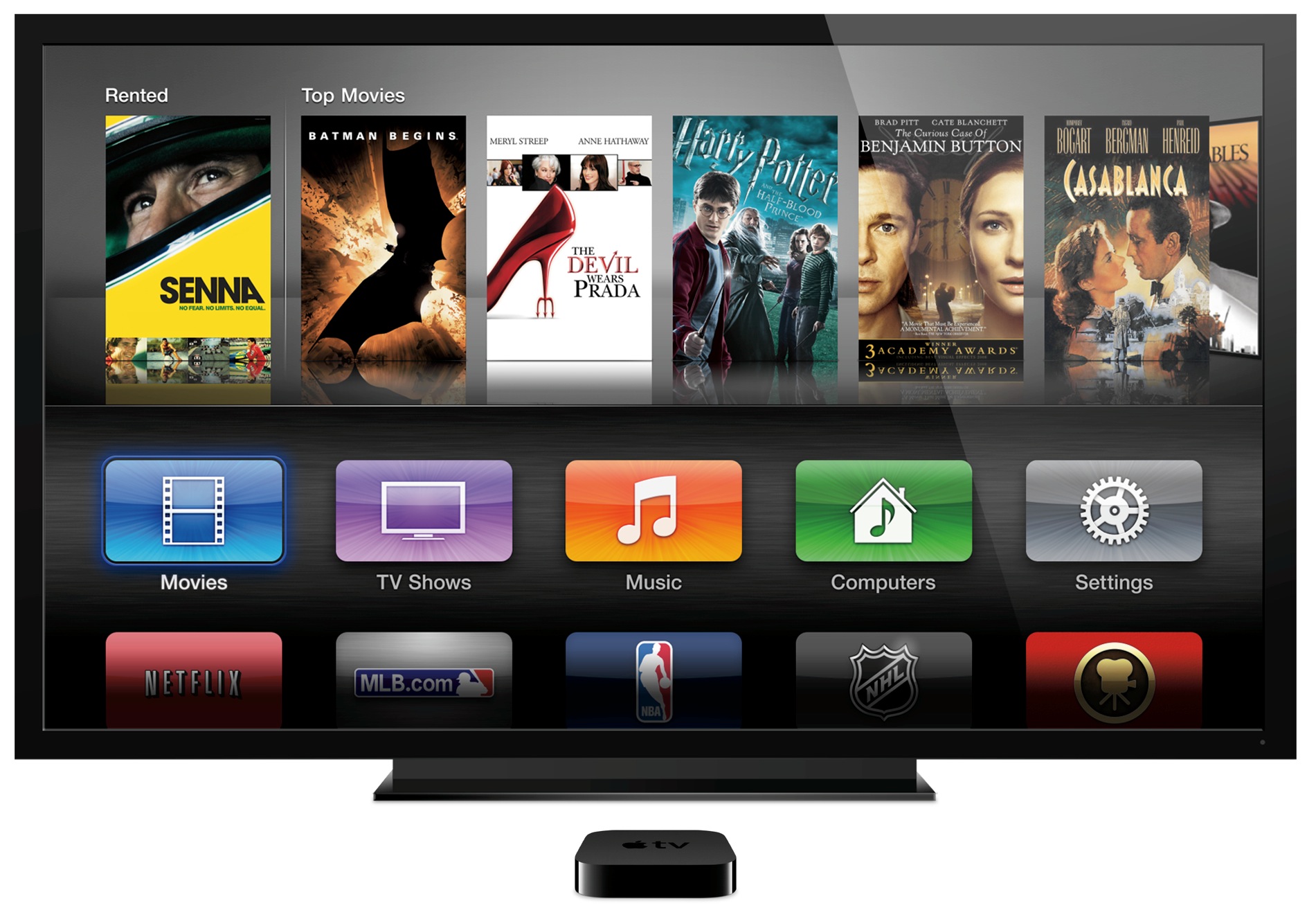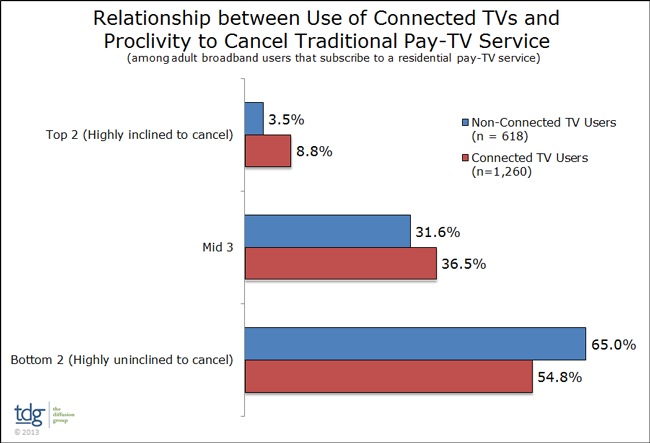So who’s going to cut the cord? Like-minded individuals like yourself – the types who own a Roku, an Apple TV or a similar connected TV device – are twice as likely to ditch the cable compared to broadband users who don’t connect their TV to the Internet.
That’s the gist of a new research into the habits of owners of so-called connected boxes. In addition to set-top boxes, game consoles and Blu-ray players, the definition also includes folks who connect their laptop to a TV with a cable. Unfortunately, cutting the cord is easier said than done…
AllThingsD passes along a TDG Research survey which tells us what we’ve suspected all along, that people who link their TV sets to the web through set-top boxes such as the Apple TV or Roku are twice as likely to stop paying for TV than their counterparts who don’t connect their TV to the Internet.
Specifically, 8.8 percent of connected TV users are highly inclined to cancel their current pay-TV service in the next six months, compared with only 3.5 percent of non-net-connected TV users – I call them couch potatoes because they’re not proactive about their entertainment compared to the owners of connected TV devices.
Unfortunately, existing incumbents are part of the problem rather than the solution.
Cable companies such as Comcast, Time Warner Cable and others have lucrative contracts with content owners in Hollywood. That’s why your cable subscription doesn’t come cheap and includes hundreds of channels you’ll never watch.
Want to watch Games of Throne through an over-the-top video service such as Netflix or iTunes? Good luck with that, as this awesome comic vividly explains.
Due to vested interests, complex licensing agreements, regional restrictions and status quo, you can’t ditch the cable and sign up for an online-only subscription to, say, HBO or ESPN.
We heard HBO has been considering providing cable-free access to HBO Go, but for now you must be existing cable or satellite subscriber in order to stream those channels on your iPhone or iPad via network-specific iOS apps.
It shouldn’t come as a surprise that cable guys are focused on keeping the more valuable connected-TV users under the fold. Per TDG Research, connected-TV users spend an average of $91 a month for pay TV versus $84 for non-connected subscribers.
While it is undeniable that the vast majority of adult broadband users that currently subscribe to a traditional pay-TV service have little or no interest in cancelling their traditional TV service, the fact that on average 7 percent of this segment are would-be ‘cord cutters’ (highly likely to cancel in the next six months, answering “6” or greater on a 7-point scale) should be of concern to operators; a rate of decline that is simply unsustainable, should these inclinations play out in the marketplace.
These findings come hot on the heels of a Parks Associates survey indicating consumers’ growing interest in streaming-media boxes as a way to liberate themselves from cable and satellite providers.
The percentage of U.S. broadband households with streaming boxes like the Apple TV and Roku has doubled since 2011 to fourteen percent share this year, according to Park Associates.
Roku is the most-used device to stream media from the web to TV sets, claiming a 37 percent share. Second-ranked Apple TV has a 24 percent share, per Parks Associates’ poll of 10,000 U.S. broadband households with streaming media devices.
However, as the overall market for connected devices is expected to double to 330 million units annually by 2017, Apple’s “hobby project” should benefit from the trend.
Which group do you belong to, cable cutters or couch potatoes?


